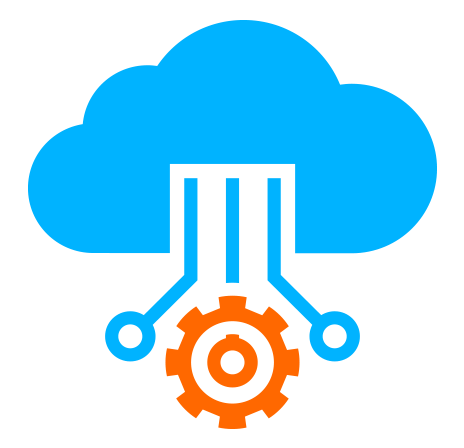 Server
Colocation
Server
Colocation
 CDN
Network
CDN
Network
 Linux Cloud
Hosting
Linux Cloud
Hosting
 VMware Public
Cloud
VMware Public
Cloud
 Multi-Cloud
Hosting
Multi-Cloud
Hosting
 Cloud
Server Hosting
Cloud
Server Hosting
 Kubernetes
Kubernetes
 API Gateway
API Gateway

The NVIDIA H100 GPU outperforms the A100 in nearly every aspect relevant to AI workloads. Built on the newer Hopper architecture, the H100 offers up to 2.4x faster training throughput, up to 30x faster inference on large language models, 67% higher memory bandwidth (HBM3 vs. HBM2e), and enhanced AI precision support with FP8 and a dedicated Transformer Engine. These features make the H100 the leading choice for demanding AI training and inference tasks compared to the older Ampere-based A100.
- The A100, released in 2020, is based on NVIDIA's Ampere architecture and features 40 or 80 GB of HBM2e memory.
- The H100, launched in 2022 on the Hopper architecture, offers 80 GB of HBM3 memory and much higher bandwidth and compute power.
Both GPUs support Multi-Instance GPU (MIG) technology but differ significantly in performance and AI workload optimization.
- A100 uses third-generation Tensor Cores and runs at up to 19.5 TFLOPS (FP32).
- H100 includes fourth-generation Tensor Cores, introduces a Transformer Engine, and reaches 60 TFLOPS (FP32), tripling the compute performance.
- H100 runs at 700W TDP vs. 400W for A100, requiring more advanced cooling.
- Memory bandwidth improves from 2 TB/s in A100 to 3.35 TB/s in H100.
- NVLink advances from 600 GB/s (A100) to 900 GB/s (H100) for multi-GPU communication.
These updates make H100 better suited for large-scale, complex AI models.
- Training throughput on H100 can be up to 2.4x faster, especially with mixed precision formats.
- Inference performance accelerates 1.5x to 30x for large language models due to the Transformer Engine.
- H100 supports FP8 precision, improving speed and reducing memory usage, which the A100 lacks natively.
This leap in performance drastically reduces training time for massive AI models and lowers operational costs.
- The H100 uses HBM3 memory with 67% higher bandwidth than A100's HBM2e.
- FP8 precision support in H100 accelerates large model computations while maintaining accuracy.
- The new Transformer Engine on H100 optimizes transformer-based models for natural language processing and vision tasks.
These improvements enable faster data processing, larger batch sizes, and lower latency in AI workloads.
- H100's fourth-generation NVLink delivers 900 GB/s bandwidth, 50% faster than A100's NVLink 3.0.
- Supports up to 256 GPUs in scalable clusters with low-latency GPU-to-GPU communication.
- Enhanced Multi-Instance GPU (MIG) technology in H100 offers 3x more compute capacity and nearly 2x more bandwidth per GPU instance than A100.
Ideal for large data centers and distributed AI training scenarios.
- The H100's higher performance comes at greater power consumption and initial cost (~$30,000 MSRP vs. $15,000 for A100).
- Cloud costs per hour for H100 range around $2.85-$3.50 versus $1.50-$2.50 for A100, but H100's speed gains can lead to lower cost per training job.
- H100 requires advanced cooling infrastructure due to a 700W TDP.
Users should balance budget, workload scale, and performance need when choosing between GPUs.
The NVIDIA H100 GPU represents a major advancement over the A100 for AI workloads, offering significantly higher compute power, faster training and inference, and advanced features tailored for transformer-based models. While it requires higher investment and infrastructure support, its performance gains often translate to cost savings and faster time to market in production AI systems.
Organizations looking to scale AI model training or achieve leading-edge inference speeds should consider the H100. For smaller-scale applications, the A100 remains a capable and cost-efficient option.
A1: A100 is more cost-effective for smaller or less intensive AI workloads, but H100's inference speed advantage benefits large-scale or real-time applications.
A2: FP8 precision balances speed and memory savings without significant loss in accuracy for large transformer models compared to FP16 or BF16.
A3: Yes, but without the dedicated Transformer Engine and FP8 support, training and inference are slower than on H100.
A4: For demanding AI training and deployment at scale, H100's efficiency gains often justify the upgrade cost.

Let’s talk about the future, and make it happen!
By continuing to use and navigate this website, you are agreeing to the use of cookies.
Find out more


